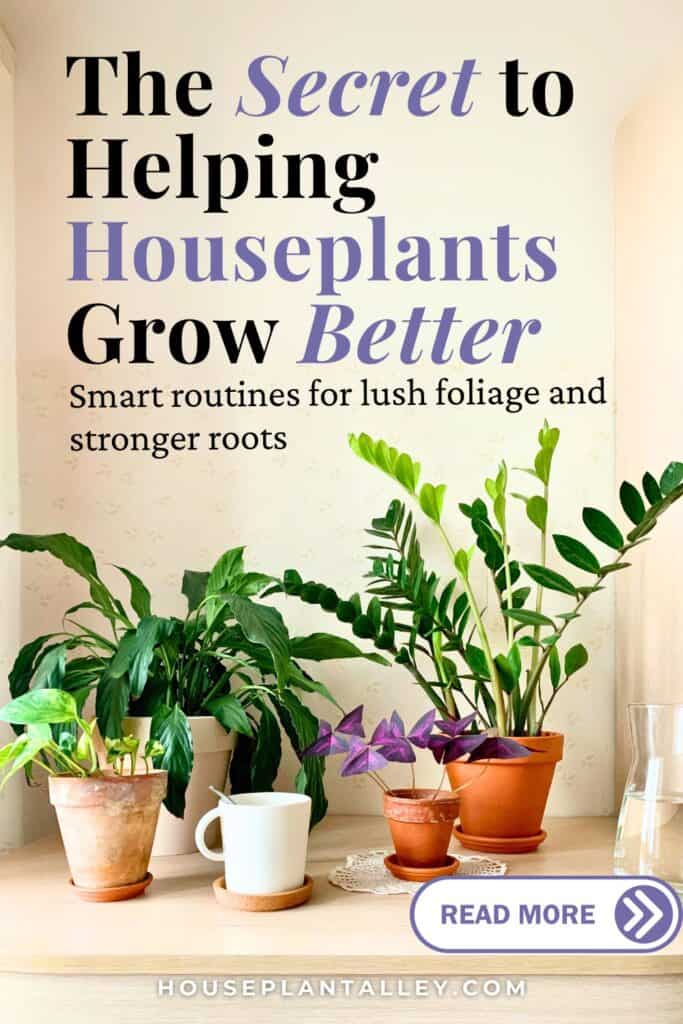Indoor plants can look sad—yellow leaves, slow growth, droopy stems—but you don’t have to be a plant expert to fix it. Most problems come from basic things like how you water them or where you put them. The good news? A few small changes can make your plants healthy, green, and full of life.

Contents
🌞 Give Your Plants the Right Light
Light is one of the most important things for your plants. Most houseplants like bright but indirect sunlight. That means putting them near a window but not right in front of it. Too much sun can burn the leaves.
Here’s a helpful tip: turn your plant a little bit (about a quarter-turn) each week. That way, every side gets light and your plant grows evenly. Remember that sunlight changes with seasons, so move your plants if needed.
🌡️ Keep a Good Temperature and Humidity Level
Your plant’s environment matters a lot. Try to keep the temperature between 75°F and 80°F. Avoid putting plants near things like air conditioners, heaters, or drafty windows.
Plants also like humidity. Most do best with 60%–75% humidity. You can increase moisture by:
- Putting plants close together
- Using a humidifier
- Placing a tray of water and pebbles near the plant
Dry air can make leaf tips turn brown, so watch out during dry seasons.
💧 Water the Right Way
How you water your plants really matters. Don’t just water on a set schedule—check the soil first. Stick your finger in the dirt about an inch. If it feels dry, it’s time to water.
Bottom watering works great. Put your plant in a tray of water and let the roots soak it up. Always make sure your pot has drainage holes so extra water can escape. Too much water can rot the roots.
🌿 Feed Your Plants With Fertilizer
Water helps, but plants also need food—called fertilizer—especially in spring and summer. You can use:
- Liquid fertilizer (mix it with water)
- Slow-release pellets
Start with half the recommended amount to avoid burning the roots. Don’t fertilize in the fall or winter—plants grow slower then. If leaves look yellow, you may be using too much. If they look pale, they might need more.
✂️ Help Growth With Pruning
If your plant looks thin or overgrown, pruning helps it grow better. Cut dead or yellow leaves, and trim leggy stems. Always use clean scissors and cut just above a leaf joint.
Do this mostly in spring and summer, when your plant is growing fast. Don’t trim more than 25% of the plant at once, or it could get stressed.
Wipe the leaves with a damp cloth to clean off dust and check often for damaged spots.
🪴 Repot When Your Plant Outgrows Its Home
Plants sometimes outgrow their pots. The best time to repot is spring or early summer. Use a pot that’s 1–2 inches bigger and has good drainage holes. Don’t repot when plants are sick or resting (like in winter).
🐛 Watch Out for Bugs and Plant Diseases
Even healthy plants can get pests like spider mites or aphids. Check your plants every week—look at the undersides of leaves and stems.
Before adding a new plant to your collection, keep it separate for two weeks to make sure it’s bug-free.
Signs of disease include yellow leaves, black spots, or a bad smell. Trim any sick parts right away. Keep the air moving and don’t overwater.
🪵 Choose Good Soil and the Right Pot
The soil under your plant is just as important as what’s around it. Use well-draining potting soil to keep roots healthy. Succulents need sandy soil.
Change the soil every 1–3 years to refresh nutrients. For pots:
- Terracotta pots are good at absorbing moisture
- Plastic pots keep water in longer
Always make sure there are holes at the bottom so water can drain.
